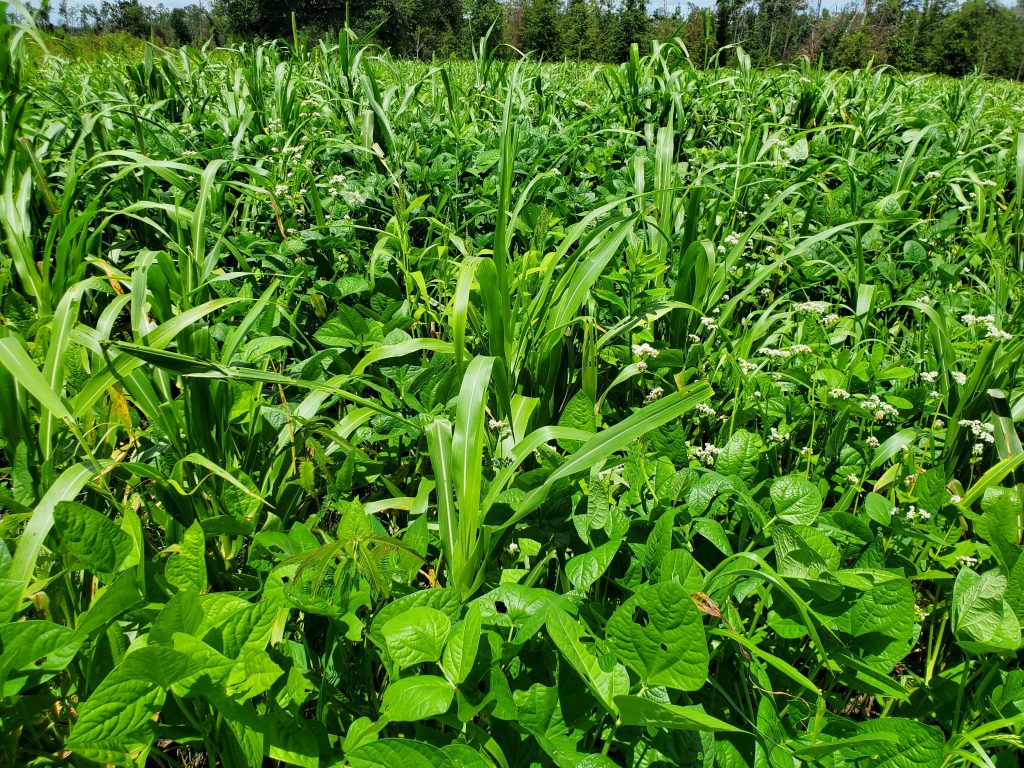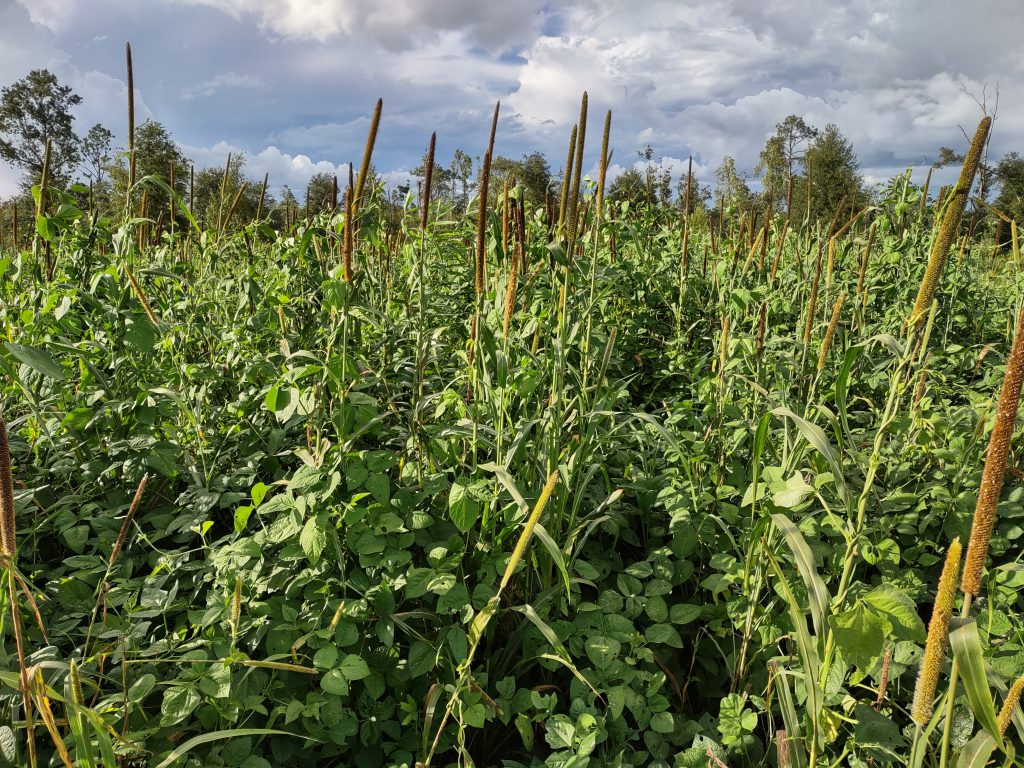Many Panhandle hunters and outdoor enthusiasts invest a good bit of time, money, and sweat into growing cool season food plots to feed and attract various wildlife. I count myself among you. However, if you want to maximize your property’s wildlife and environmental benefits, planting your otherwise abandoned-till-next-fall food plots with a diverse mix of warm-season, wildlife-friendly species is one of the best practices you can implement!
The benefits of planting summer food plots are several. First, while most of us are feeding wildlife in winter, supplemental nutrition for our “big three” game species (Whitetail Deer, Bobwhite Quail, and Eastern Wild Turkey) is critical during summer because all are engaged in energy intensive activities – lactating whitetail does are supporting fawns, quail breeding season is in full swing, and wild turkey hens are busy raising poults. Planting a mix of species consisting of seed-producing grasses, high-protein, bug-attracting legumes, and other beneficial broadleaf plants addresses these nutrition needs by providing a constant buffet of high-quality food for all the above species.
Also, adding summer plantings to your food plot program ensures that a green, soil enhancing cover blankets the ground year-round. Practiced for years in the agricultural community, cover crops play a key role in soil conservation and increased plant performance. Your summer food plots function as a cover crop by reducing soil erosion, moderating soil temperatures, building organic matter (key for holding nutrients in soil and an indicator of soil productivity), adding nutrients (particularly when nitrogen producing legumes are included), and encouraging beneficial soil organisms to flourish, further increasing the productivity of your food plots!
Now that I’ve sold you on planting summer food plots, it’s time to consider species selection. As mentioned before, when selecting your mix, try to include at least one each of a grass, a legume, and a non-legume broadleaf. Each of these plant categories serve different purposes. Tall grasses like Pearl Millet and Grain Sorghum provide excellent structure for vining plants like Cowpeas and Lablab to cling to, produce large quantities of seed for birds, and serve as quick-growing cover for species that are vulnerable to early deer browsing, like Cowpea and Forage Soybean. Smaller grasses like Browntop and Proso Millet are useful to produce a quick seed crop (45 days after planting) and protect slower establishing species from browsing. Including legumes like Cowpea, Forage Soybean, Sunn Hemp, Alyceclover or Aeschynomene, levels up the nutrition of your summer food plot (these species have crude protein levels that exceed 15%) and pumps nitrogen back into the soil for future crop use. A quick internet search for the article “Annual Warm-Season Legumes for Pastures, Cover Crops, or Wildlife” by UF/IFAS Extension Specialist Ann Blount outlines for you each of the above legumes in detail. As mentioned earlier, I also like to include a non-legume broadleaf like Buckwheat or Sunflower for variety, seed production, pollinator attraction, or even just aesthetics – a sunflower bloom here and there in a food plot always brings a smile! In 2022, I planted summer food plots in a 7-way mixture of ‘Tifleaf 3’ Pearl Millet, ‘Dove’ Proso Millet, ‘Iron and Clay’ Cowpeas, ‘Laredo’ Forage Soybean, Buckwheat, Sunn Hemp, and Aeschynomene. Large mixtures with diverse times to maturity like this ensure there is always something growing, flowering, making seed, attracting bugs, etc!

Photo: Daniel Leonard
Once you’ve figured out which species you want to plant, next comes determining seeding rate. There are several methods to help you determine the seeding rate of each species included in the blend. Penn State University has an excellent video to help determine rates of individual species in a cover crop mix. For a less scientific approach that will get you close, simply divide the full monoculture seeding rate for each species by the number of species in the mix. For example, if the monoculture seeding rate for Pearl Millet is 25 lbs/acre when planted in 7” grain drill rows and you are mixing 4 other species with it, you would plant the Pearl Millet at a 1/5th rate or 5 lbs/acre. For more information on species’ growing requirements and seeding rates, University of Georgia Extension has a comprehensive guide to the topic. Another option is to come in to your local UF/IFAS Extension office and get one-on-one help with customizing your species mix and determining seeding rates for your food plots, one of the many services we provide to county residents!

It’s important to not get discouraged if your mix isn’t perfect the first year! Planting summer wildlife forage mixes is as much art as science. After each year, evaluate how each species did, if each species’ rate was correct, if the settings on your drill or spreader were appropriate (mine were not in year one!), and if wildlife used or avoided what you planted. You can then adjust rates or swap species to dial your species mix and planting rates and achieve your property’s summer food plot goals!
For more information about summer wildlife plot plantings or any other agricultural subject, contact your local UF/IFAS County Extension office.
- Is it Colder than Last Year?What the Data Says. - January 17, 2025
- Florida’s Fall Foliage – Why 2024 Brought the Best Show in Recent History - December 20, 2024
- Poor Food Plot Performance – 3 Simple Solutions to Common Problems - January 12, 2024
